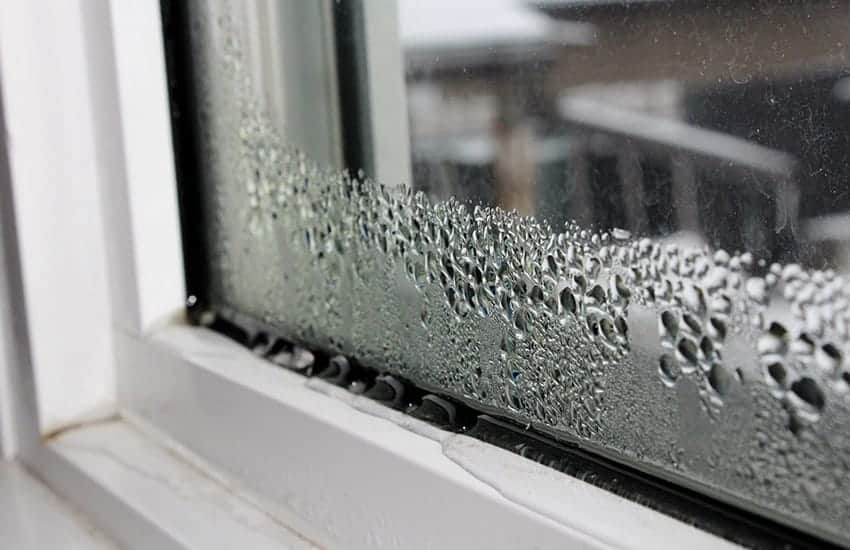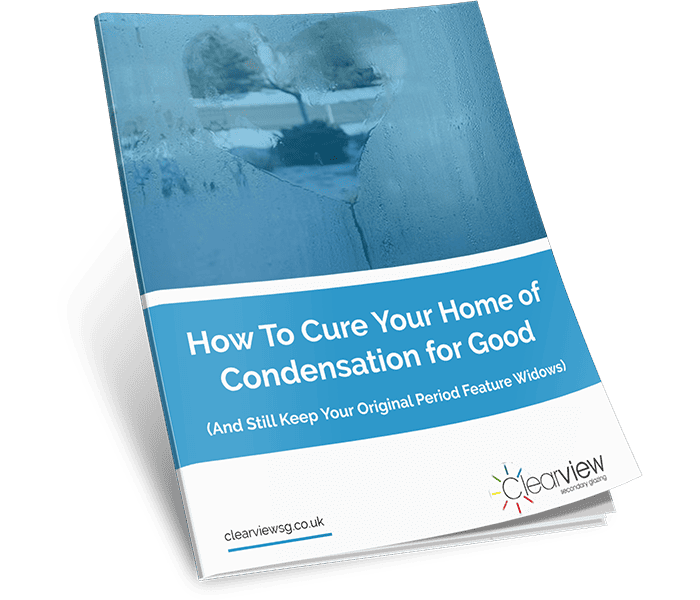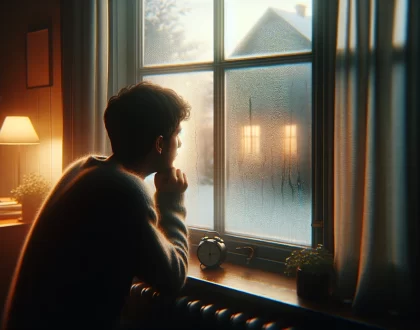Why Are My Double-Glazed Windows Wet Inside the Pane?

Double glazing is hailed as a modern, efficient solution for your windows. But as many homeowners will know, double-glazed windows aren’t without their own problems. One such problem is that they become wet on the inside of the unit.
In this post, we’ll take a closer look at why double-glazed windows get wet on the inside and how to fix it.
Why are my double-glazed windows wet inside?
Double-glazed windows are designed with two panes of glass, separated by a small gap of air. This gap acts as an additional barrier, making it harder for heat and noise to pass through.
However, if you’ve had double-glazed windows for a few years, you may have noticed small droplets of water inside that gap. These droplets can sit at the bottom of the unit, or trickle down from higher up.
But why exactly are your double-glazed windows wet inside? In short, the seal around your double-glazed windows will have broken down or come loose over time. Even the tiniest gap or break in this seal allows moisture from the air to get in, leaving the inside of your double-glazed windows wet.
Why are my double-glazed windows getting condensation?
A similar query from people with double glazing is about why their windows are getting condensation. Fortunately, the answer is pretty much the same. Once the seal has been broken and moisture has got in, the vast majority of that moisture will become trapped inside the double-glazed unit.
When the droplets are heated up, because the sun is shining on your windows, for example, the moisture will be vapourised back into a gas. Eventually, it will be drawn back out onto the cold surface inside your double glazing, becoming condensation.
Condensation is arguably more of an eyesore than water droplets, as it can mist up your double-glazed windows from the inside. Unlike condensation on single glazing, you can’t actually wipe it off.
What’s behind the water and condensation?
Whether it’s water droplets or condensation, seeing moisture inside your double-glazed windows can be incredibly frustrating. To get rid of it, it’s worth considering what causes it in the first place.
As mentioned, it’s partly down to the seal breaking around the glass panes on your windows. The other part of equation comes from the moisture that’s getting in.
There are all kinds of day-to-day activities that release moisture into the air inside your home. Cooking, boiling the kettle, washing up, bathing, showering and even breathing can contribute. To give you a better idea, heating appliances contribute around 10 pints of water for every 8 pints of fuel they use, while an hour of breathing can add over 50ml water into the air.
Clearly, you can’t just stop doing these things – especially breathing! However, you can minimise the amount of moisture that stays inside your home by keeping it well ventilated. Opening a nearby window when you’re doing anything that releases moisture (with the exception of breathing) will let a lot of it escape straight out of your home.
On top of that, try to keep the rest of your home well ventilated by opening windows and doors whenever possible. Obviously, that’s not ideal in winter, given that it will also let the heat escape, but it’s one way of reducing the condensation inside your windows.
Reducing condensation inside your double glazing
Keeping your home well ventilated is one free and easy way to lower the humidity and reduce condensation inside your windows. However, there are also some more permanent measures that can stop double-glazed windows getting wet inside.
Replacement
Window replacement is the most obvious way to eliminate condensation and stop the inside of double-glazed windows getting wet. A new unit will have new seals which will stop moisture getting in.
But it’s not without its problems. For one, it can be pretty expensive replacing all of your windows. Replacing double-glazed windows also means getting rid of your original windows, which may be detrimental to the overall look of your property.
Repair
Double-glazed windows can be repaired to reduce the effects of condensation inside the unit. A hole is drilled to remove the moisture from between the panes, before the entire unit is resealed to prevent more moisture getting in.
That said, this option isn’t guaranteed to work. It could also leave your windows looking less than perfect. Even if it does work, it’s hardly a long-term solution.
Secondary glazing
Arguably the best solution for reducing condensation on double-glazed windows is secondary glazing. It works by installing a secondary window on the inside of your existing fixtures. This secondary unit is fully sealed, which prevents the natural moisture in your home from getting to your primary window.
There’s no need to get your existing windows replaced and impact the style of your home or commercial building. Even better, secondary glazing provides a long list of other benefits. As well as reducing condensation, it will improve thermal efficiency, reduce noise levels and bolster your windows’ security.
Stop your double-glazed windows getting condensation
If you’re sick of seeing misty windows, frustrated by tiny droplets and tired of people telling you to get your windows replaced, Clearview can help. Our high-performance secondary glazing units are an effective way to tackle condensation in your home.
We supply and install a wide range of secondary glazing products to suit almost any type of window, from vertical sliders to hinged casements. That’s paired with a 10-year guarantee, so you can rest assured your windows will stand the test of time.
Once you’ve found the perfect product to reduce condensation on your windows, simply choose from professional installation or top-quality DIY secondary glazing kits. We install secondary glazing throughout South Yorkshire and the surrounding areas, while our DIY kits come fully assembled and pre-drilled to make installation a breeze.
Any more questions? Don’t hesitate to get in touch with our secondary glazing experts.

Discover How To Cure Your Home of Condensation for Good
Yes, you did read that correctly. Unlike the common cold, there is a cure for condensation. A permanent one. In this free eGuide – written by specialists – you will discover how to get rid of condensation – for good and enjoy a warm, dry home again.
Simply enter your name and email below and we will send a free copy straight to your inbox.



